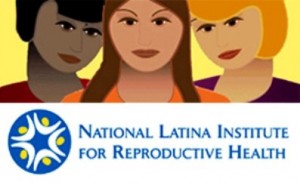Latinas Benefit Big From New Insurance Guidelines
 By Maria Elena Pérez, Interim Executive Director
By Maria Elena Pérez, Interim Executive Director
National Latina Institute for Reproductive Health
Latinas by far disproportionately benefit in every area of the new Department of Health and Human Services guidelines that would eliminate costly insurance co-pays for birth control as part of the implementation of the Patient Protection and Affordable Care Act (ACA). Latinas have been writing to me today to ask what does this all mean? Despite the fact that much of the news coverage has focused on the birth control recommendations, Latinas stand to benefit in many ways by these new guidelines.
The decision to require new insurance plans to start covering birth control co-pays as soon as August 2012 is a huge victory for millions of Latinas and their families who every day struggle with the question of whether to buy food, pay rent, or forgo birth control and risk an unintended pregnancy. It reaffirms what many Latinas already know: birth control, by definition, is prevention. While we’re disappointed that HHS has suggested language that would allow religious institutions to opt-out of coverage, and we’re looking forward to working with them on this issue, today’s news is a welcome relief for millions of women who pay costly co-pays for contraception.
Latinas like Jersey Garcia, a working mom who was told she would have to pay for her IUD, is one such beneficiary. For years, Jersey used the IUD to prevent unintended pregnancy until she had it removed so she could start a family. After her planned pregnancy, she was surprised to learn that her insurance company now refuses to pay for a new IUD device and will only pay for insertion. The device itself costs $800, which she can’t afford. She is also unable to afford the insurance co-payments for the birth control pill, which could be as high as $480 per year. Over a span of 30 years, women can pay upwards of $15,000 for co-pays and related fees for contraception.
Jersey and women like her are the reasons why last year we launched our first ever Latina Week of Action for Reproductive Justice focused specifically on this issue. And this past February, we continued our efforts with theBirth Control: Nuestra Salud, Nuestra Prevención campaign to lift the voices of Latinas and all women who have been advocating for access to prescription birth control without co-pays under the health law.
But beyond birth control, there is so much to celebrate today. For example, the HHS guidelines include improved screening for cervical cancer. The incidence of cervical cancer for Latina women in the United States is almost twice as high as non-Latina white women. Latina women have the second highest mortality rate from cervical cancer, after black women. Yet cervical cancer is very preventable: 85% of women who die from cervical cancer never had a pap smear.
The guidelines also include services for pregnant women including screening for gestational diabetes and lactation counseling and equipment to help women who choose to breastfeed do so successfully. Keeping our babies healthy is a top priority for Latinas. Studies have shown that Latinas tend to choose breast-feeding more than other women, and that reduced breastfeeding is correlated with lower incomes. For many Latina moms who are employed, breastfeeding becomes a luxury rather than a choice. Yet, the benefits of breastfeeding for women and infants are critical to public health. Breast milk provides nutrients and antibodies that protect babies from disease. Infant formula has not been able to fully replicate these protections. In addition, breastfeeding has been shown to reduce the risk of obesity, cancer, and postpartum depression in moms.
Also of importance are guidelines regarding screening and counseling for all women and adolescent girls for interpersonal and domestic violence in a culturally sensitive and supportive manner. NLIRH’s work on reproductive justice issues shows that immigrant women and lesbians may not report domestic violence or interpersonal violence and may not seek medical attention for fear of harassment or racism, something we documented in our recent report, LGBTQ Latin@s and Reproductive Justice.
By recommending that health care providers care for patients in a culturally sensitive and supportive manner, HHS is recognizing that patient care is not one-size-fits-all and has to incorporate the diverse needs of our community. It’s a remarkably different set of priorities to make being healthy the goal of healthcare, rather than simply treating illness. I hope you’ll take the time to join me in thanking Secretary Sebelius for this historic step.
[Photo By Facebook]
